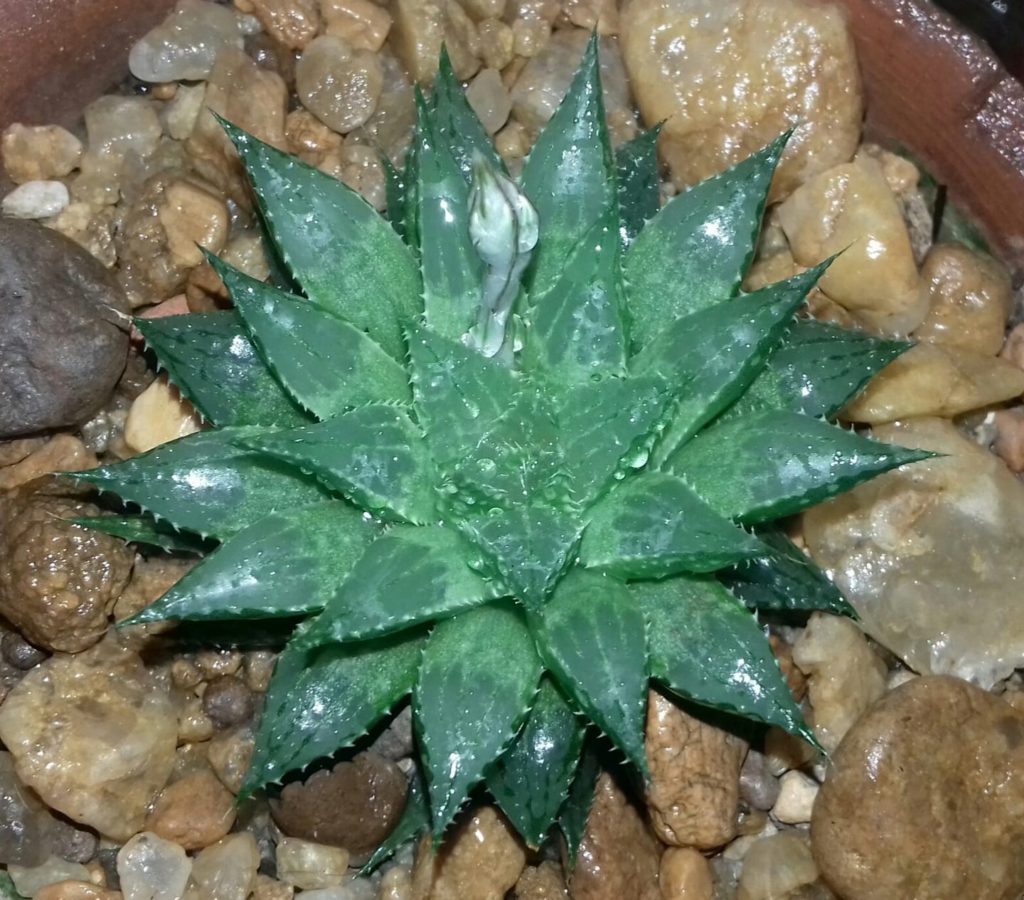

Soumen Aditya
The visual confusion about two separate species Haworthia emelyae var multifolia and Haworthia mirabilis var sublineata. Vol -1. Except geographical distribution. The epithet “multifolia” : “many leaved”, but first morphology based taxonomy dose not accepted, because similar leaves arrangement for Haworthia mirabilis var sublineata, [also have been “many leaved”]. Where “sublineata” means “almost lined”, where no differences between two taxon as visual observation. [Because apex windows also be very “lined”]. I agreed both species are comes from different geographical distribution but can not possible visually without the means of latin diagnosis. In other hand, Haworthia emelyae var multifolia definitely a link with Haworthia rossouwii var rossouwii [H. serrata] or Haworthia heidelbergensis any way. Haworthia “sublineata” described V. Poelln in 1938, where Haworthia emelyae var multifolia described by Bruce Bayer1979. Note Haworthia serrata described by Bruce Bayer 1973 as same location for type Bredasdorp, actually Near Heidelberg. Also note the “serrata” means “toothed”. So except botanically trams three Plant species have no much more differences. My visual taxonomical position for three plant only Simple haworthia triebneriana [mirabilis now] var. sublineata. V. Poelln. 1938. Type, S. Bredasdorp, is correct. Different locality Only Geographical race.
Bruce Bayer
Difficult to really follow this argument and there are also errors in citation of location. The sublinatea t loc. at Bredasdorp, is totally apart from the rossouwii location also at Bredasdorp. The “serrata” Bayer (now also rossouwii) at Heidleberg is much further east. Suggesting that rossouwii and mirabilis are the same species is stretching things too far when the probability is that retusa, pygmaea, mutica, emelyae and mirabilis, while excluding rossouwii, are one species.
Apurva Sukant
I like that you felt inclined to make this argument based on your observation. It is indicative of your deep interest and efforts. IMHO as far as tools of taxonomy go I think the hierarchy is: gene based > geography based > visual similarity. I understand that Haworthia taxonomy is still dominated by classical works of geographical analysis. Avenue remains for it to move into gene based determination which has significantly reduced error margins.
Mr. Bayer has himself responded to your post. It is an encouragement and surely one of the authoritative points of view on this.
Bruce Bayer
Thank you Apurva. Current Haworthia and Aloid classification is largely based on DNA sequencing (gene based). I personally think it is flawed because DNA does not determine form. Also what DNA scientist gain from technological skills, is lost by lack of field experience, insights and more general knowledge. I also think that a sensible, reasonable and modern species definition is seriously lacking. What Soumen is doing, is what has been attempted by many enthusiastic students and collectors. Some even with extensive field experience. Very welcomed and more than justified, but not very rewarding.
Apurva Sukant
I understand the limitations of sequencing that you suggest. It makes sense that a complimentary approach may be best for now, if both tools are not perfect themselves as of yet. For my knowledge please mention some institutions or authors that carry out sequencing of haworthias for taxonomy. I would be very interested in getting to know their work.
Bruce Bayer
Univ Johannesburg Dept Botany – did the sequencing of the aloids.
[ed.] Facebook conversation February 7, 2021
